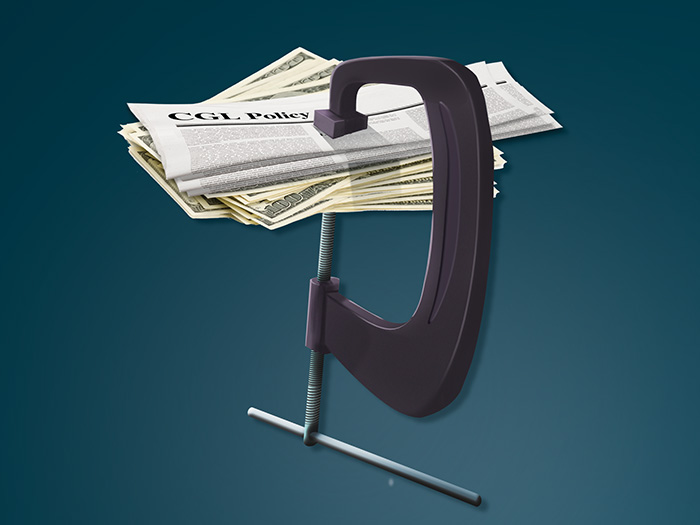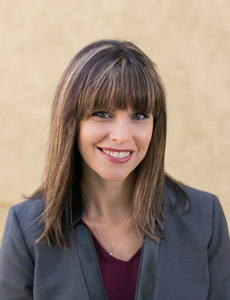3 Liability Lines Caught in a Tightening Vise of COVID-19 Accountability

Before the pandemic, the outlook for most lines of liability was cautiously optimistic.
After years of rising losses, insufficient rate, excess capacity and combined ratios over 100, the market finally began hardening significantly after the severe hurricane season of 2017. Though no two sectors are affected the same way, most large buyers were seeing premiums increase by as much as 300% at renewal.
“A year or two ago, most of the pain was focused on habitational risk, trucking and high-hazard industries like manufacturing and construction. Now, it’s kind of spread out amongst all industries. Even companies with great loss history are seeing significant rate increases above 100%,” said Doug O’Brien, national casualty and alternative risk practice leader, USI Insurance Services.
Normally, as a market hardens, new players enter the field to take advantage of rising rates, but that influx hasn’t happened during the recent upswing.
Liability is still a challenging line of business. Shifting societal attitudes toward corporate responsibility have an outsize impact on loss severity that can be tough to predict, and underwriters aren’t clamoring to take a piece of the pie until they see more stability and profitability.
With roughly $750 billion in surplus still out there, capacity is hardly shrinking and has at least remained stable, feeding projections that hardening would continue before leveling out by the end of 2020.
Though it still had years of underpricing to make up for, the market was moving in the right direction.
COVID-19 has thrown a wrench in that outlook.

Ellen McCarthy, VPand senior risk manager/product underwriter, U.S. Lawyers, Swiss Re Corporate Solutions
The pandemic has served to diminish some underlying liability exposures as businesses were forced to close. Fewer employees and customers on premises and lower sales volume ultimately translate to reduced risk. The shutdown of court systems across the country has also put a pause on litigation and nuclear verdicts. General liability claim frequency and severity have both dropped as a result.
But most industry experts agree this lull is simply a calm before the storm and that the already challenged liability market will be hit with a flurry of new claims and record-breaking verdicts as a direct result of the pandemic as the economy opens back up.
It’s not yet clear how the pandemic will affect market conditions over the long term, but here are the trends experts expect to see across three lines:
1) Employment Liability Claims Will Spike
“In 2020, I expect to see a material uptick in employer liability claims,” said Jon Drummond, head of casualty broking, North America for Willis Towers Watson.
“While state-specific, if employers require their employees to come back to work without taking the necessary precautions and they get sick — or worse, die — we will see these workers or their families file claims against the employer for willful and wanton misconduct or wrongful death.”
David Perez, chief underwriting officer, North America, Global Risk Solutions for Liberty Mutual, agreed that the standard of care for businesses will only increase. Even companies adhering to all official reopening guidance and safety recommendations may not be totally protected from EPL claims.
“What can we reasonably expect from employers? That threshold keeps getting more and more nebulous. Businesses will certainly be held to a higher standard,” Perez said.
Especially where companies issued statements that “safety is our #1 priority,” it may be difficult to defend against claims of negligence. Organizations claiming to put employee safety first had better be able to back it up.
“What we’re seeing is businesses running ads and posting on their websites that safety is their number one concern, and that exposes them to potential reptile arguments,” said Codie Dukes, JD, partner and member of the Complex Trial Team at law firm Tyson & Mendes.
“Plaintiffs’ attorneys will use that language against them. ‘You said it was your top priority, but you didn’t make it your top priority in this instance, did you?’ ” said Bob Tyson, founding partner of Tyson & Mendes. “We recommend that companies adjust their messaging to say they are addressing the concerns of their employees, and that they care. You don’t need to be more explicit than that.”
Some states are, however, passing legislation to protect essential businesses from these claims.
At least seven states have either passed or are considering bills that would protect grocery stores, hardware stores, pharmacies and other essential businesses from liability for COVID-19 infections, provided they follow all recommended safety protocols around use of PPE, regular disinfecting and physical distancing.
2) Financial Stress Will Precipitate Professional Liability Claims
Dozens of public companies have already filed for bankruptcy, unable to dig themselves out of pandemic-induced debt.
Even where the overall economic environment may be largely to blame for a company’s poor performance, frustrated shareholders may go after deep-pocketed executives and pounce on any indication of bad decision making, mismanagement or misleading statements.
“COVID-19 is creating some uncertainty with regard to the financial strength of clients being insured,” said Phil Norton, senior managing director for the Management Liability Practice at Gallagher.
“That’s going to prolong the D&O hard market, because uncertainty is difficult to underwrite, and whenever there’s uncertainty there’s generally higher prices as well. The hard market could extend all the way to Q3 of 2021, based on the financial stress we’re seeing on our clients.”
Norton recommended companies proactively disclose any new risk factors introduced by the pandemic via an 8K filing or press release and discuss their guidance philosophy with outside counsel.
“You need to somehow inform the marketplace if you have new risks that could affect your stock price. That’s what really sparks D&O claims — when shareholders allege that executives have misled them,” Norton said.
Of course, that action has the downstream effect of increasing professional liability risk for the attorneys who provide outside counsel. After the last recession in 2008, there was a spike in claims brought against attorneys, especially in hard-hit sectors like real estate, by companies looking to blame another party for their financial ruin.

Codie Dukes, JD, partner, member, Complex Trial Team, law firm Tyson & Mendes
“We’re not seeing any immediate claims against lawyers, and we’re not seeing the same hardening effect [against small and mid-sized firms] evident in other lines, but we are paying attention to the possibility of an uptick in the future,” said Ellen McCarthy, vice president and senior risk manager/product underwriter for U.S. Lawyers, Swiss Re Corporate Solutions.
Professional service providers in general are facing greater exposure due to the increased likelihood of error associated with conducting remote work while juggling the stressors of working from home.
Working away from the office and its secured network increases vulnerability to cyber breaches of confidential client data as well. Office protocols that ensure efficiency and organization may have fallen by the wayside.
“I expect there’s going to be an uptick in claims related to failure to follow protocol and missing deadlines. People tend to relax their professional standards a bit when working from home, and attorneys can’t afford to let that happen as distressed companies are leaning on them,” McCarthy said.
3) Nuclear Verdicts Will Return to Erode Gains in the General Liability Market
The market’s been given a reprieve from multi-million and billion-dollar jury awards since March, and some are hopeful that the global crisis will stymie nuclear verdicts over the long term.
“One possible positive scenario is that we all pull together against this common enemy, and that the anger we often see in the jury box is diminished by that. Maybe by the time we get back in jury boxes, people will be feeling more relieved and optimistic. It’s hard to know how events will affect the psyche of juries,” Liberty Mutual’s Perez said.
“Even companies with great loss history are seeing significant rate increases above 100%.” — Doug O’Brien, national casualty and alternative risk practice leader, USI Insurance Services
Defense attorneys may also have better luck if trials are done virtually — a concept that was successfully tested in a mid-May mock trial in Dallas.
“Traditionally, plaintiff’s attorneys play to the emotions of the jury. They are more expressive, verbose and dramatic. And that just doesn’t come across on video,” said Tyson of Tyson & Mendes. “In our temporary new normal, there will be fewer jury trials, and those that do happen may favor defense attorneys.”
Despite this hopeful surmising, most believe that nuclear verdicts will only get worse once litigation picks back up. Most people do not, in fact, believe we are ‘stronger together’ and will seek accountability for the public health and economic impacts of the virus from large, resource-rich organizations that they believe could have done more to protect the public.
“People are really angry,” Perez said. “It’s a combination of the economic crisis, the social isolation and the general feeling that commercial insurers have walked away from this problem, however undeserved that feeling is. It’s going to be hard to find a jury that hasn’t been impacted in some way, whether they lost their job, got sick themselves or lost a family member. If you’re a company facing a liability claim related to COVID-19, juries are not going to be sympathetic towards you.”
Other factors that drive nuclear verdicts are also likely to continue, including litigation financing, forum shopping and the general desensitization of juries to large sums.
“The reptile tactics deployed by plaintiff’s attorneys are just one driver behind catastrophic liability,” said Drummond of Willis Towers Watson.
“One problem we’ve seen is junk science presented as expert evidence, and I think that will be more prevalent now in COVID-related cases, since there is still so much we don’t know about this virus and so much confusion among the general public about the way is spreads. Losses may get worse before they get better.”
What It All Means for Insureds
“The latest estimate from an industry perspective was that pandemic-related losses will top $100 billion. That goes beyond general liability; but without question, this crisis will exacerbate an already challenging marketplace,” USI’s O’Brien said.

Bob Tyson, founding partner, Tyson & Mendes
Over the short term, insureds should expect rising rates to continue at least into next year, which may require scaling back on limits or utilizing more markets to meet their needs. O’Brien said he was already seeing large clients scale back on limit, increase retentions and utilize more markets to fill out their towers.
“For $200 million in limits, it used to take maybe four to seven carriers to fill it out. Now you need 10 to 15. Average limits are being reduced to $10 million or $15 million from an average of $25 million, coupled with higher retention levels,” he said. “Bifurcating of limits is customary now. So, a carrier may offer $15 million on primary lead, and then another $15 million in a second tower above $100 million, effectively spacing out the exposure more.”
That trend is likely to continue as underwriters seek to minimize their exposure to the unpredictable impact of COVID-19-related losses. Though no changes to policy forms have been implemented yet, insureds should also keep watch for the introduction of infectious disease exclusions and tightening of pollution exclusions.
In the D&O world, “we have seen some carriers try bankruptcy exclusions as a way to mitigate the impact of COVID-19,” Norton said, “and we fight hard against those exclusions whenever possible.”
According to O’Brien, “switching from per-occurrence to claims-made or occurrence-reported forms might benefit insureds. Carriers prefer the latter two forms, because they can release reserves sooner rather than later and minimize latent exposures. They may offer moderate discount for that.”
Brokers and carriers should leverage industry expertise to help clients understand their obligations through various phases of reopening and develop the protocols and practices to stay in compliance with guidelines.
“The first line of attack is making sure companies are following CDC guidelines. A lot of companies are requiring customers and employees to sign COVID-19 waivers. The efficacy of those waivers remains to be seen, but it’s an attempt to shift away some of the responsibility,” Perez said.
Transparency about reopening plans and documentation of adherence to safety protocols is paramount to minimize liability and optimize risk profiles going into renewals … which should be started as early as possible.
While no one can say with certainty what the long-term impact of the pandemic will be, insureds should prepare for the liability vice to keep tightening for the time being. &










